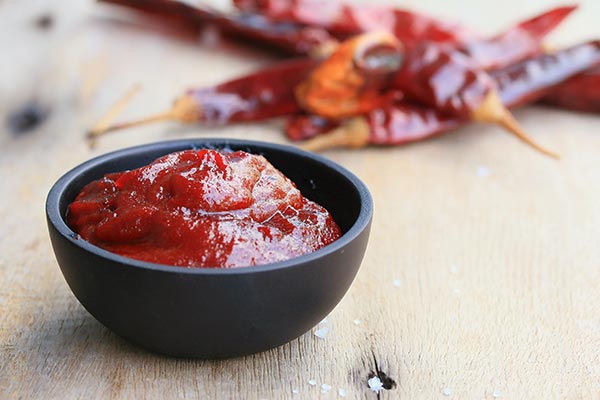
Advertisement
Gochujang is a fundamental ingredient in Korean cooking. Made with red chili pepper flakes, glutinous rice, miso, salt and some form of natural sweetener, this fermented chili paste features quite an interesting flavor profile.
Sweet, hot and with unmistakable notes of umami, gochujang is used in a wide range of Korean dishes, from mixed rice bowls (bibimbap) to kimchi stews (jjigae). On its own, gochujang can be a bit too pungent, so it is often mixed with other ingredients to tone it down.
Health benefits of gochujang
Gochujang shines when it is used to add depth to dishes. But this thick crimson paste also holds its own when lined up against other foods with medicinal properties and nutritional benefits.
For one, the heat of gochujang is said to be good for the lungs and large intestine. In addition, gochujang is also said to be beneficial for digestion, thanks to the bacteria that ferment the paste in the first place.
Listed below are other well-known health benefits of gochujang:
- Boosts digestive health – Gochujang is rich in beneficial microbes that aid in digestion and protect the gastrointestinal tract from harmful bacteria. In fact, natural healers in Korea would tell patients to use gochujang to treat digestive problems.
- Increases metabolism – Want to eat delicious food and lose weight at the same time? You’ll love gochujang. Studies show that capsaicin, the active substance in chili peppers, can suppress appetite, increase feelings of fullness after eating and boost metabolism.
- Supports heart health – Chili peppers are associated with better heart health as well. In fact, recent studies show that chili lovers have a lower risk of heart attack, heart disease and stroke. Therefore, adding spicy foods like gochujang to your daily meals may keep your heart healthy and strong.
- Reduces blood sugar levels – Capsaicin in chili peppers is thought to reduce high blood sugar levels and make cells more sensitive to insulin, the hormone responsible for controlling blood sugar.
- Combats inflammation – Chili peppers are rich in powerful plant compounds that have antioxidant properties. Together, these compounds work to protect cells from oxidative stress and inflammation. In effect, these compounds also lower the risk of inflammation-related diseases like cancer.
Quick and simple gochujang recipe
Gochujang is readily available in many Korean groceries. But it’s easy to make gochujang at home by yourself. Any decent gochujang should have authentic Korean red pepper flakes and rice vinegar, at the very least.
The beauty of making gochujang is you also get to skip ingredients like high-fructose corn syrup, starch syrup and other undesirable components often found in the store-bought varieties.
Here’s a recipe for gochujang that’s just as good as what you’d get from a Korean grocery:
Ingredients:
- 5 garlic cloves, grated
- 1 cup water
- 1 cup chickpea miso paste
- 3/4 cup Korean red pepper flakes
- 1/3 cup rice syrup
- 1 tablespoon rice vinegar
- 1 tablespoon sesame oil
- 1 teaspoon salt
Preparation:
- In a saucepan, mix water and rice syrup over medium heat.
- Once incorporated, reduce the heat and add miso paste. Stir well to combine.
- Once the miso has dissolved, add pepper flakes. Keep stirring to incorporate the ingredients.
- Pour in the rice vinegar and sesame oil, then add salt and garlic. Keep stirring until a paste is formed.
- Turn off the heat and let the paste cool before placing it in an airtight jar or bottle. The paste can last three to six months if stored in the fridge.
Gochujang will keep in the fridge and is a great addition to stir-fries, soups, veggie bowls, rice bowls and more. Don’t be afraid to experiment with this versatile and ultra-nutritious paste.
Sources:
Advertisements







